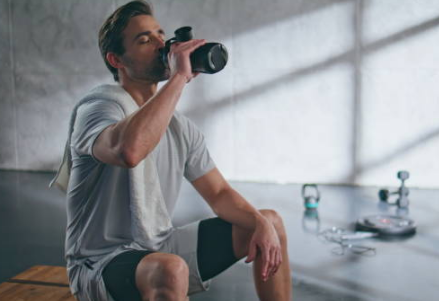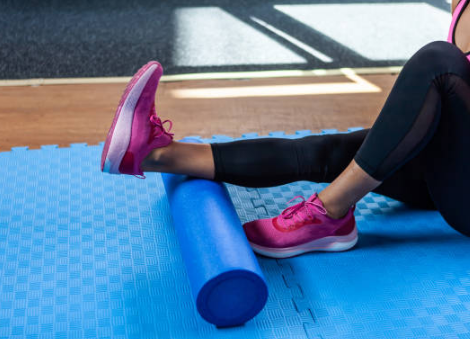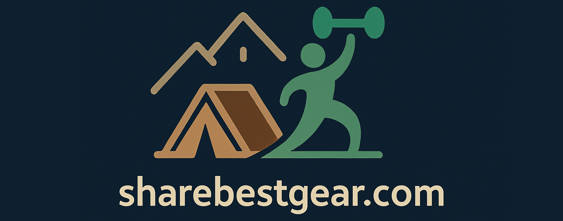What’s worse than muscle soreness? Not much, if you ask us. That burning, aching feeling—aka delayed onset muscle soreness (DOMS)—can be brutal. But for anyone looking to speed up recovery, good news: there are ways to ease the pain. In fact, the best time to think about soreness is before it starts. Yep, proper recovery begins before you swipe your gym card or hit “start” on your fitness tracker.
7 Ways to Relieve Post-Workout Muscle Soreness
There are a handful of smart habits you can build into your day to ease sore spots and prevent that next-day pain.

1. Stay Hydrated
Hydration is one of the easiest and most effective self-care habits. Our bodies are 60–70% water, and staying hydrated is crucial for digestion, metabolism, and—yes—muscle recovery.
-
Water helps deliver nutrients to your muscles before, during, and after exercise
-
Staying hydrated improves blood flow during movement, reducing soreness and cramping
-
It protects joints and helps prevent injury
-
It keeps your tissues strong—think healthier skin and bones
-
It helps your digestive system absorb nutrients and flush out waste
Pro tip: Make hydration part of your daily rhythm. Instead of chugging water before a workout, sip throughout the day. Link it to daily habits—like drinking half a glass every time you use the bathroom, or a full glass when brushing your teeth.
2. Fuel Your Muscles with Food
“You are what you eat” rings especially true when it comes to recovery. What you put in your body becomes the fuel your muscles need to rebuild and repair.
Before a workout, opt for meals or snacks with complex carbs and lean protein. Quick carbs (like fruit) are great if you’re short on time, while slower-digesting ones (like oats or whole grains) work well if you’ve got a longer lead-up.
Post-workout, your body’s energy reserves are tapped—so now’s the time to refuel. That doesn’t mean a greasy burger. Think lean protein (like turkey) plus healthy carbs (like a whole wheat wrap or sweet potato).
3. Don’t Skip the Cool Down
Ever wrapped up a workout and bolted straight to your car? We’ve all been there. But when your heart is still pounding and blood is flowing fast, suddenly stopping can cause blood pooling and lead to tightness or discomfort.
Take 5–10 minutes to cool down. Let your breathing normalize and your heart rate drop gradually while gently moving your body—your future self will thank you.
4. Master the Foam Roller
Foam rolling isn’t just trendy—it works. Whether before or after a workout, it improves circulation, loosens tight fascia (the connective tissue between skin and muscle), and reduces soreness.

Keep one at home so you can roll while watching TV or before bed. If you only use one at the gym, even a few minutes post-workout can make a big difference.
Benefits include:
-
Increased blood flow during recovery
-
Release of fascial tension
-
Reduced soreness in the days following your workout
Spend 5–7 minutes rolling major muscle groups—especially sore areas.
5. Stretch, Stretch, Stretch
Warm-ups and cooldowns are more than a checkbox—they prep your brain and body. Stretching after a workout not only boosts flexibility but also helps relax the nervous system.
You don’t need to be a yoga pro. Just take a few minutes to gently stretch, breathe deeply, and loosen up your muscles. It helps relieve tension and prevent soreness.
6. Take a Rest Day
Somehow we got the idea that skipping a workout equals failure. Let’s set the record straight: rest is silent training. If you’re limping, groaning every time you sit, or struggling to lift your arms after shoulder day, take the hint—your body needs rest.
Rest days allow muscles to rebuild stronger. Skipping them can lead to burnout, fatigue, and even injury.
7. Practice Active Recovery
Rest doesn’t have to mean couch-bound all day (even if popcorn and Netflix are tempting). Active recovery means light movement to keep blood flowing without stressing your muscles.
This might include:
-
Light walking
-
Bodyweight squats
-
Gentle yoga or stretching
-
Easy cycling or swimming
You don’t need to hit 10,000 steps—but try not to stay parked on the couch all day. Get up every 20 minutes, even if it’s just to stretch or walk around the room.
Final Thoughts:
Soreness is part of the process, but it doesn’t have to derail your routine. A little planning, smart recovery strategies, and listening to your body go a long way. Train hard—but recover smarter.
